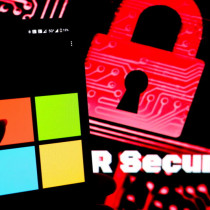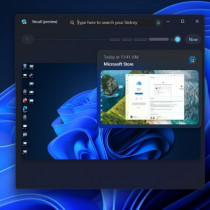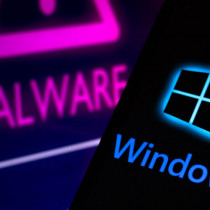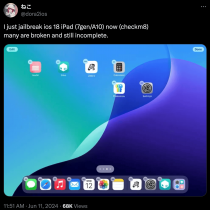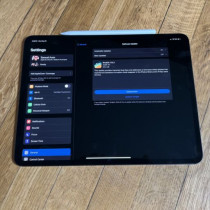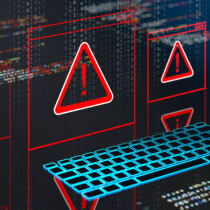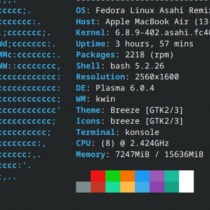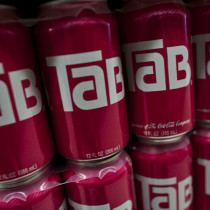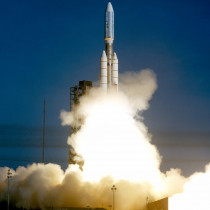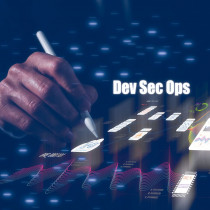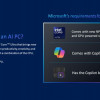Inside the Box : Comparison of Linux Distributions
Comparison of Red-Hat 6.0, Debian 2.1, Slackware 7, Caldera 2.3, Turbolinux
6.0 Server/Workstation, and DLX.
This article was not meant to, and will not provide a conclusion as to
which distribution is the "best". It is only meant to help you decide,
or perhaps inspire you to try a distribution that you haven't before.
Also, my spelling really sucks. I know the words, I just cant spell the
damn things. Here ya go:
What
is Linux?
"Linux is a free Unix-type operating system originally created by Linus
Torvalds with the assistance of developers around the world. Linux is
an independent POSIX implementation and includes true multitasking, virtual
memory, shared libraries, demand loading, proper memory management, TCP/IP
networking, and other features consistent with Unix-type systems. Developed
under the GNU General Public License, the source code for
Linux is freely available to everyone."
-- www.linux.org
First of all, It is very important to know that Linux in and of itself
doesn't make an entire operating system. Linux is the kernel, the piece
of software that allows communication between applications and the hardware.
Linux is the kernel for the operating system, of which there are many
to chose from. The difference between distributions is the installation,
the included applications and utilities, and the organization of the files
used
by those applications, and usually the location of the configure files.
Some come with scripts to help automate tasks and configuration of applications
(Red-Hat, Caldera, Turbolinux) making it easier, some don't (Slackware,
Debian), in which case you edit the configuration files by
hand, making it more "customized". There are many, many more distributions
to choose from, however these are the only ones that I have used long
enough to really be able to write about. I have the CD's to them all (except
DLX, DLX fits on a disk!), and they are all well used.
REDHAT 6.0
Red-Hat has the biggest (IMOHO unfortunately) user base of all the Linux
distributions. 95%of the HOW-TO's don't apply to
Red-Hat, as everything is that much different. They try to have good scripts,
and mostly do a good job at it. The organization, IMOHO, is as different
from the others as possible without breaking the Linux file system standard
on purpose. The install is, about as friendly as anything else, with pretty
good customizability. I like the bar graphs showing how the file transfer
is doing (Turbolinux incorporated this also). A lot of people like it,
but I've seen many a RH user convert to Slack or Debian. In all honesty,
I think if they didn't have $$ they would be dead. RPM is a nice package
manager, however. I just absolutely cannot use it for more than a few
weeks due to the pain in the ass to learn. I have no $$ for a manual that
only works for Red-Hat. The only RH 6.0 manual I ever seen had nothing
but how to do things using GNOME. I cannot stand this, especially not
being ably to just look at the how-to's. 85% of the people I help using
Linux use Red-Hat. They, also, cannot afford a book, and didn't buy the
box set and tech support, so they have to ask stupid questions. Just a
little while ago, someone asked me how to set the hostname. They couldn't
figure out linuxconf or hostname. Luckily, there was still netconf. Netconf
hasn't been removed (yet). Red-Hat is the M$ of Linux. It's good to know
it, but don't live it. I suggest this one as a doorstop. If you really
must use it, be ready to fix security holes/bugs. They push versions over
stability.
Debian 2.1
Debian is a rock solid O/S based on almost completely GPL'ed software.
It undergoes extremely extensive testing and is developed by people all
over the world. Debian also, however, can early be the bitchiest to install.
Overall, I like the install, but I can see why so many people are disgusted
by it. But hey, it's not meant for grandma, it's meant to work its ass
of, and in return, you gotta put a little time into it. After that, you
let it sit there and do it's job. It is also a great workstation, if you
don't mind configuring things by hand if they need changing. One major downside it does have, however, is it's packaging system. I have a lot
of trouble finding things that use it, but the all famous tarball (which
I prefer anyway) is always there. Debian 2.1 ships with the 2.0.30 kernel,
all you need for a fast, reliable server. You may want to update the kernel
if the machine is going to be a workstation however, as there is more
hardware support. I strongly suggest 2.2.13. 2.2.14 has a security issue,
and I'd wait to make sure no bugs/flaws are found in 2.2.15. As much I
would like to write about 2.2.14's small prob, there just isn't much to
say about it. Details on the
2.2.14 prob can be found at www.securityfocus.com. It isn't that big a
deal, really, but it does make me paranoid. I suggest Debian for those
situations when you need a server that's just gunna sit there and, well,
serve.
Slackware 7
My pride and joy. Well, if I owned it it would be, heh. Very sweet install,
not CLI, not point and click, ASCII all around. It makes choosing which
packages you want a breeze. Very customizable install, yet not a bitch
to learn, they got it just right. Slackware 7 is another rock solid O/S
developed by Patrick Volkerding. Slack leans heavily toward being a server,
but is a very excellent workstation as well. It has many desktop options
such as KDE, GNOME, Enlightenment, and some less resource-hogging ones
as well, including WindowMaker. Of course many other distro's come with
a wide variety of desktops also. When you need it to be a workstation/power
toy, it rocks, when you need it to be a server, well, I've seen
Slack servers with uptimes of over 2(two) years. It comes with kernel
version 2.2.13. Also, Slackware 7 tends to run smoothly on ancient hardware,
a 486 can be a damn good mail/http/telnet/ftp server in no time, although
if you want to run them all at the same time, I suggest Slackware 3.6.
Slack also comes with a few scripts to help you get going (I wouldn't
be online if it didn't) until your used to editing config files on your
own.
BTW: Slackware jumped from version 4 to version 7 due to Red-Hat and Mandrake
jumping versions. They jumped to 6.x, so Slack 1 upped them. Slack will
not jump versions if the others don't also, as they got to many questions
as to why they where so far behind, when in all actuality, they weren't.
I suggest Slackware when you need a server that will be modified from
time to time, or you want a very powerful
workstation.
Caldera 2.3
Grandma's O/S of choice. This thing babies you like your mamma did when
you where 3 months old. Edit a configuration script? By hand? Point and
click your way to do everything and anything. 2 of the greatest things
about it is the idiot-proof graphical install, and COAS. COAS, the Caldera
Open Admin System. Oh my god it makes it so simple (and uncustomizeable).
Want to load a module? *poof* it's in at a few clicks. Also includes a
DOS emulator, and WINE, the WINdows Emulator. Now you can pirate Macromedia
software and run it, too (I do not condone the using / distributing /
providing / sending / or acquiring of stolen software (I DO, however,
admit that I am full of shit)), with out knowing a damn thing about HOW
it works. I'm not actually sure which kernel it has installed... haven't used it in quite a while. Caldera never crashed on me, however, so it's
more than [likely] a good one. I suggest this one when you need an extremely
easy O/S, perhaps to drag some one away from Winblows.
Turbolinux 6.0 Server / Workstation
Rock Solid? erm, I'll say very stable. It's based on Red-Hat, but it is
(IMOHO) better than Red-Hat. The install is a lot more like slackware,
but still nowhere close, (As in actually how, not quality). For the most
part I [licked] the install. I was only disappointed by the lack of the
capability to back up at some points. I had to restart the install once,
rather [annoying]. As Debian, it gives you the option of color or not
first thing, when in Slackware you use a different image for color or
not. Turbolinux, IMOHO, comes with the best packages, both server and
workstation. The server
version as many good tools, such as sniffit and pinglogger, and nmapd,
not to mention Sentry. The workstation has an equally good package, but
geared more toward (You guessed it) a workstation. And then The scripts.
All I can say, is "sweet". There is a script for just about every major
function, making it quick to get set up. I suggest this one for demonstrations,
and when you need a capable, fairly powerful server / workstation set
up and ready to go in haste.
DLX
Originally I wasn't going to include this distro, but I found it while
surfing www.linux.org. You download it, recompile your current kernel,
adding only what you want, less The better, of course. Then you compile
it as an a.out, and, well, read The INSTALL. It's sweet, definetly worth
The effort. It uses a.out because it seems to work better with ramdisk.
Like The QNX demo disk, it doesn't touch your hard drive, unless you want
it to. You
can mount your partition(s) under it. Sweet. It went right into my toolkit.
Perhaps someone could hack it up into a nice root kit, *hint*hint*?
Well, that's it for my comparison.
- Liquid Sphear
1.)
HardAttack
: Review of Gateway Microserver -
L33tdawg
2.)
Setting up
a DHCP server (Part 2) -
L33tdawg
3.)
WINS
vs DNS -
Haven
4.)
Self
Actualisation through broadband
- L33tdawg
5.)
Somebody
loves you - an analysis of the ILOVEYOU Worm -
Black Hand
6.)
Distributed
Tools -
sasha / lifeline
7.)
Fun
with Windows (Part 2) -
xearthed
8.)
Inside
the box : Comparison of Linux distributions
- Liquid Sphear
9.)
A look at
SNMP
- Haven
10.)
Things
to do in Ciscoland when you're dead
- gauis
11.)
Future
of Viruses
- Cpt ZZap





